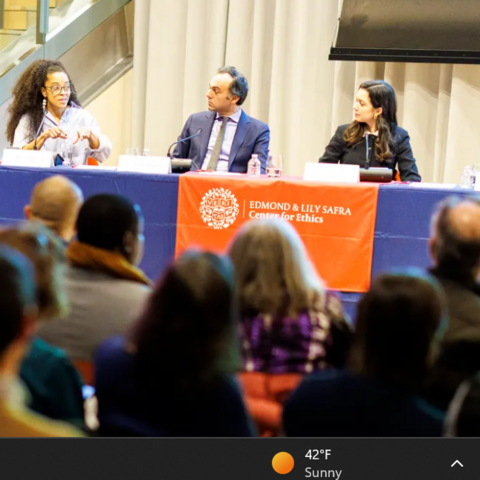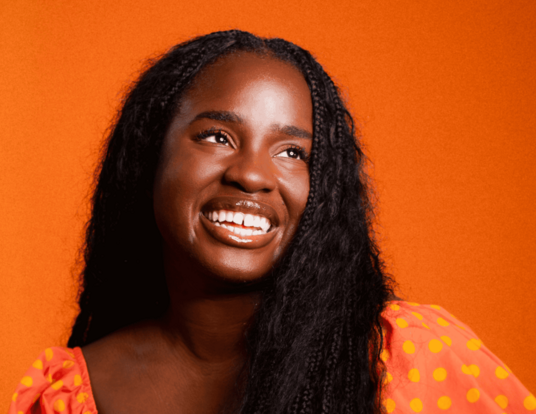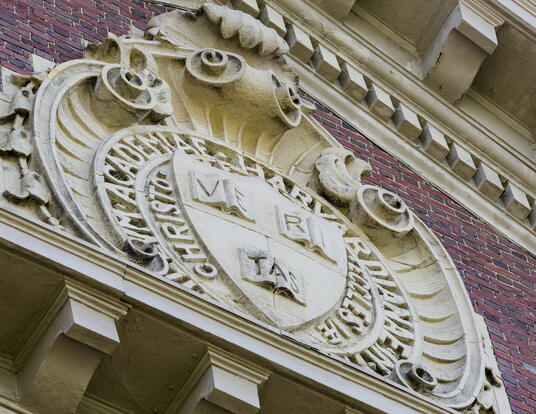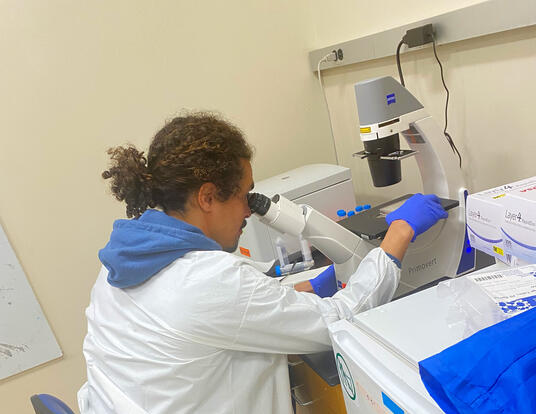Bridging the Gap
Tiara Lacey crossed the chasm from undergraduate biology major to PhD research scientist thanks to a Harvard research program. Now she helps others do the same.
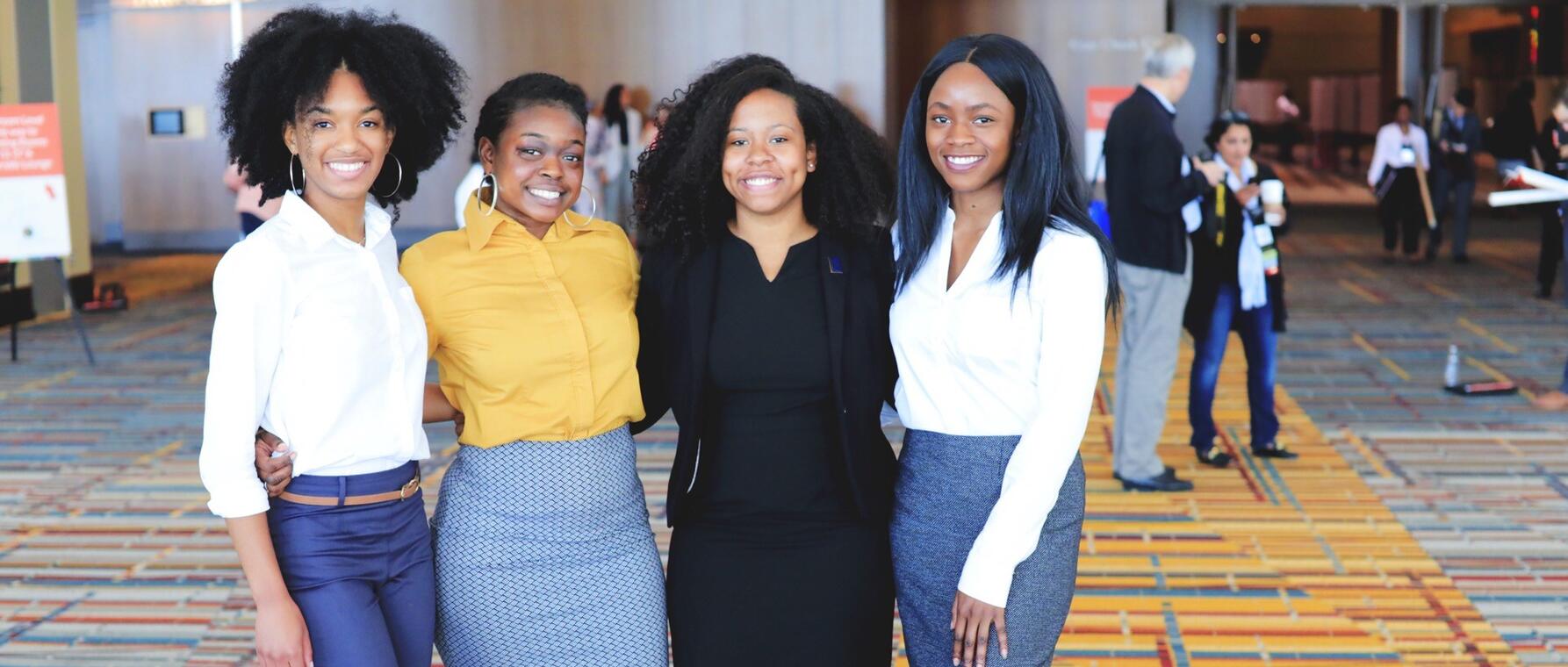
Tiara Lacey already had an impressive academic resume when she participated in Harvard’s Summer Honors Undergraduate Research Program (SHURP) in 2017: undergraduate biology major at Spelman College with work in the labs of Morehouse College as well; Biomedical Summer Undergraduate Research Fellow at Yale; summer research experience at the Harvard T.H. Chan School of Public Health. Nevertheless, she says that SHURP was where she learned to become truly fluent in the language of science.
“Every subfield has their own terms,” she says. “When you’re an undergraduate trying to raise your knowledge set to the graduate level, it’s a big chasm to jump across. SHURP is where I learned the language and the methods for doing high-level science at a research one university.”
Lacey’s SHURP experience led her to the PhD program in biological and biomedical sciences at the Harvard Kenneth C. Griffin Graduate School of Arts and Sciences, where she models how the composition of cerebral spinal fluid changes in pregnant people following the activation of their immune system, and how those changes impact the development of their baby’s brain in mice in the lab Professor Maria Lehtinen. It also led her full circle to involvement in the program as a mentor herself. Today, Lacey helps undergraduates new to careers in research cross the academic chasm to groundbreaking science.
Students leave [SHURP] not only with enhanced knowledge, skills, and abilities but also with an increased sense of belonging in the broader scientific and medical research community.
—Xavier Du Maine, SHURP ’14, PhD ’22
Assistant Director of Culture, Community, and Engagement, Harvard Integrated Life Sciences
On the RISE
SHURP is a competitive 10-week summer research experience for undergraduates interested in pursuing graduate study in the biological and biomedical sciences. Participants, including many first-generation college students, come from a wide range of backgrounds and institutions to experience graduate-level work at one of the world’s leading research universities. They conduct full-time, paid research in a Harvard lab under the guidance of faculty and a research mentor.
"SHURP students are typically rising juniors and seniors who are on the cusp of applying to graduate school and who are excited about taking the next step forward in their academic journeys," says program co-director Xavier du Maine, SHURP ’14, PhD ’22. "The program provides them with a suite of programming, mentorship, and support that will aid them in reaching these goals."
At SHURP, students also participate in weekly career and professional development sessions, meet with peer mentors, and present their work both at the Leadership Alliance National Symposium and in a final oral presentation on campus. Just as important, they gain a lasting professional network of fellow “SHURPers” and mentors. For Lacey, these included former Dean for Equity, Diversity, Inclusion, and Belonging (EDIB) Dr. Sheila Thomas and former Director of EDIB Dr. Karina Gonzalez Herrera, who provided support well into her PhD program.
"Students leave the program not only with enhanced knowledge, skills, and abilities but also with an increased sense of belonging in the broader scientific and medical research community," explains du Maine. "This increased confidence and enhanced science identity is something that lasts well beyond the span of the program."
Growing up in Columbia, Maryland, Lacey always had a strong interest in science and research. She majored in biology at Spelman, a historically Black women’s liberal arts college in Atlanta, and found her way to neuroscience through lab work across the street at Morehouse College.
“Spelman had a lot of great biology labs, but they were more focused on things like plants and amoeba,” she says. “I knew I wanted to work with animals and study the brain. So I crossed the street—literally—to Morehouse and started working with hamsters in a behavioral neuroscience lab. That was my first hands-on experience with research, and I was hooked.”
Just before starting college, Lacey learned of opportunities for summer learning experiences supported by the National Institutes of Health’s Research Initiative for Scientific Enhancement (RISE) Program. “I got an email saying, ‘Do you want to do research and get paid for it?’” she remembers. “I was like, ‘Heck, yeah!’” She spent her first two college summers at Yale and Harvard’s T.H. Chan School of Public Health. When a Spelman friend and SHURP alumna told her about the Harvard program, she decided to apply. “She came back and told us all about the program,” Lacey says. “She said it was just the best. So I thought, ‘Okay. Maybe that’s a program I want to apply to.”
Though she had a burgeoning interest in neuroscience, Lacey landed in a breast cancer lab at SHURP. Today, she’s glad she did. Under the mentorship of Professor of Pathology Alex Toker, Lacey solidified her skills in important methods and techniques. “Even though I put in for neuroscience, I know that I was at the beginning and that anything I would learn would be valuable,” she says. “And it was definitely a learning curve—the practicing, the studying, and learning a new project in a short amount of time,” she says.
[SHURP] was an amazing cohort. Pretty much everyone went on to PhD programs at top institutions. We’re still connected today, following each other on Instagram and LinkedIn, watching everyone progress in their careers.
—Tiara Lacey
During her years at Spelman, Lacey’s exploration of neuroscience focused on behavior, “with a bit of the biological side of things,” mixed in. At SHURP, she was immersed in the language and methods of molecular and cellular biology. “It was like, ‘Phosphorylation. Oh, okay. That's what that means.’ We did different experiments using different methods; the western blot versus the full lysate, things like that. I was just trying to become really fluent in the language of science.”
For Lacey, SHURP wasn’t just about learning new techniques or gaining exposure to Harvard’s research environment—it was about finding a community that felt like home. While at the program, she made connections that lasted well beyond the program’s ten weeks, providing support and feedback that continue to shape her academic and professional trajectories. “It was an amazing cohort,” she says. “Pretty much everyone went on to PhD programs at top institutions. We’re still connected today, following each other on Instagram and LinkedIn, watching everyone progress in their careers.”
When it came time for Lacey to choose a PhD program of her own, the sense of community that she experienced at SHURP carried over, thanks in part to organizations like the Minority Biomedical Scientists of Harvard (MBSH, now the Minority Biomedical Scientists Association of Harvard Griffin GSAS), which partnered with SHURP for events and mentoring. “Both MBSH and the peer mentor coordinators of SHURP were just welcoming. They answered all our questions. When it came time for the interview process, I reached out to them and we had conversations about the biological and biomedical sciences program. Everyone at Harvard seemed thoughtful and service-oriented. So I thought, ‘Yeah. Let’s do it!’”
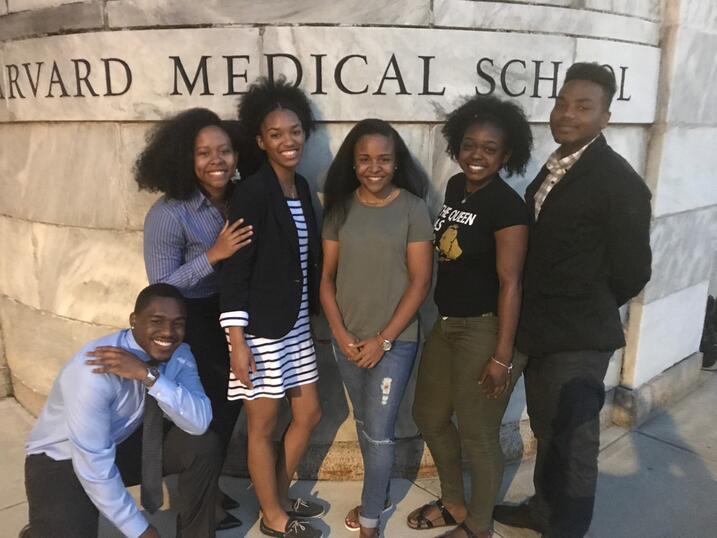
Mentorship: Paying It Forward
Since arriving at Harvard, Lacey has mentored SHURP students in every capacity imaginable: as a lab co-mentor, peer mentor, peer mentor coordinator, and now once again as a peer mentor.
“I always chuckle at myself,” she says. “It’s like I’ve played every SHURP role there is! But that’s just how important the program has been to me. Someone invested in me, and now I get to do the same.”
One recent mentorship moment stands out. A SHURP student she was advising wanted to understand mouse genetics, a concept he’d never encountered before. Lacey used a combination of flipped classroom techniques and chalk talks—a hallmark of SHURP communication training—to help him grasp the material.
“I gave him a list of key terms and told him to look up review articles. Then we did a chalk talk on Zoom where he taught me what he’d learned,” she says. “If you can teach it, you understand it. And then we refined it together.”
For Lacey, mentoring is just as rewarding as research. In fact, it helps her refine her own skills—both scientific and interpersonal. “Helping students through a challenge feels amazing,” she says. “It’s bidirectional. I’m learning too—how to communicate, how to be a better teacher. It’s all practice for becoming the kind of mentor I want to be in the next phase of my career.”
I always chuckle at myself. It’s like I’ve played every SHURP role there is! But that’s just how important the program has been to me. Someone invested in me, and now I get to do the same.
—Tiara Lacey
Her own research, meanwhile, continues to evolve. Lacey is investigating how inflammation during pregnancy changes the composition of cerebrospinal fluid, potentially altering how the brain develops in the fetus. Her hope is that by understanding these mechanisms, scientists may one day intervene and prevent neurodevelopmental disorders.
“If brain development is going wrong, maybe it’s [in part] because the cerebrospinal fluid—that surrounds the brain—is off,” she says. “Maybe if we can fix that, we can help the brain develop more normally. That’s what I’m exploring.”
Now in her final year of the PhD program, Lacey looks back on SHURP as a turning point.
“Doing SHURP was super essential,” she says. “They helped us with presentations, gave feedback on our CVs and personal statements, and taught us how to talk about our science confidently—even if we were still learning it. I learned how to tell my scientific story.”
Get the Latest Updates
Join Our Newsletter
Subscribe to Colloquy Podcast
Simplecast


